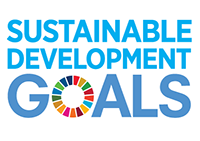Median Income Gap
Definition:
Difference between male and female (15+) median individual income.
Methods and Limitations:
Individuals includes tax filers and dependants, of all ages, with income.
The median income gap refers to the difference between male and female median income in the same year. A positive ‘+’ value indicators a higher income among males, while a negative ‘-‘ value indicates a high income towards females.
Total income is income from all sources. As of 2020, COVID-19 – Government income support and benefits are included in income estimates. A detailed definition of what is included in total income is available from the Technical Reference Guide for the Preliminary Estimates from the T1 Family File (T1FF)- opens in a new browser window.
Median is the middle number in a group of numbers. Where a median income, for example, is given as $26,000, it means that exactly half of the incomes reported are greater than or equal to $26,000, and that the other half is less than or equal to the median amount. Starting in 2007, median incomes in the data tables are rounded to the nearest ten dollars (prior to 2007 they were rounded to the nearest hundred dollars). Zero values are not included in the calculation of medians for individuals.The median after-tax income gap, by sex, is the difference between the male and female median after-tax income for a specific year. A positive number reflects a higher median after-tax income for males.
Sources:
Statistics Canada. Table 11-10-0008-01 Tax filers and dependants with income by total income, sex and age

 Median Income Gap in the Sustainable Development Goals
Median Income Gap in the Sustainable Development Goals
Click on the SDG to reveal more information
5. Achieve gender equality and empower all women and girls
While the world has achieved progress towards gender equality and women’s empowerment under the Millennium Development Goals (including equal access to primary education between girls and boys), women and girls continue to suffer discrimination and violence in every part of the world.
Gender equality is not only a fundamental human right, but a necessary foundation for a peaceful, prosperous and sustainable world.
Providing women and girls with equal access to education, health care, decent work, and representation in political and economic decision-making processes will fuel sustainable economies and benefit societies and humanity at large.
8. Promote inclusive and sustainable economic growth, employment and decent work for all
Roughly half the world’s population still lives on the equivalent of about US$2 a day. And in too many places, having a job doesn’t guarantee the ability to escape from poverty. This slow and uneven progress requires us to rethink and retool our economic and social policies aimed at eradicating poverty.
A continued lack of decent work opportunities, insufficient investments and under-consumption lead to an erosion of the basic social contract underlying democratic societies: that all must share in progress. The creation of quality jobs will remain a major challenge for almost all economies well beyond 2015.
Sustainable economic growth will require societies to create the conditions that allow people to have quality jobs that stimulate the economy while not harming the environment. Job opportunities and decent working conditions are also required for the whole working age population.

